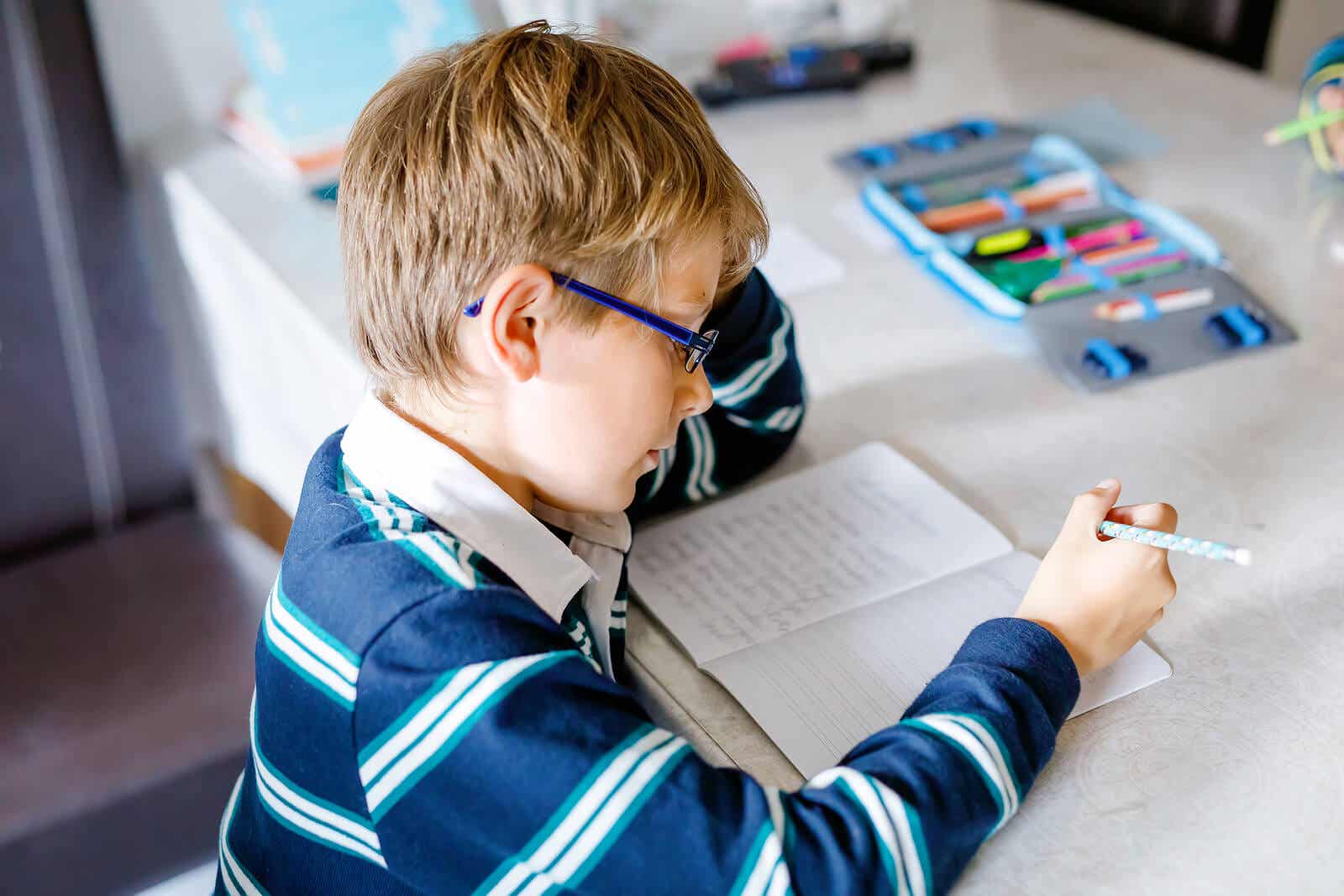The Benefits of Creative Writing in Childhood


Written and verified by the psychologist Ana Couñago
Creative writing consists of inventing and creating stories full of originality and moving away from conventional standards when it comes to writing. Creative writing in childhood is very beneficial for a child’s development. Why? We’ll tell you in this article, so keep reading!
“Creativity is the power to connect the seemingly disconnected.”
-William Plomer-
The benefits of creative writing in childhood
Creative writing is very attractive for children, as they simply have to let their imagination run wild and capture all the ideas that come to their minds on paper, without having to stick to certain writing patterns.
In addition to entertaining them and being great fun, this practice provides many benefits for a child’s development, such as the following:

It enables language development
One of the greatest benefits of creative writing is that it allows the development of linguistic competence, both at a communicative and comprehension level.
While carrying out this task, children are forced to express their thoughts in the best possible way. They need to try to build a coherent story, and they’ll need to read and reread what they’ve written until they’re satisfied with the final result.
Performing this creative process frequency on a regular basis can have a really positive impact on children’s school performance.
Creative writing in childhood encourages imagination
Children have incredible imaginations. You should try to stimulate it as much as you possibly can so that they never lose it and always value it. Creative writing offers an ideal opportunity to use imagination freely and without limits.
“A child with imagination will become a creative man or woman, more able to create, invent, and, as a result, contribute to society.”
-Lyman Frank Baum-
Creative writing boosts emotional intelligence
Although the activity in question has to do with creating fictitious stories, many children, while they’re writing, express what they’re really feeling, or things they’d like to experience. So, through creative writing, children can connect with their emotions and feelings, and process and channel everything that’s in their minds.
Promotes self-confidence
In creative writing, there are no wrong answers and no bad stories. All stories are considered to be good, in order for children to strengthen their self-esteem and self-confidence, and to become aware of all their abilities as they write and invent stories.
“You can’t exhaust creativity; the more you use it, the more you have.”
-Maya Angelou-

Activities to practice creative writing
As we’ve seen, the benefits of creative writing are numerous. But how can we put it into practice? Here are some ideas to help:
- Continue writing an unfinished story, describing what’ll happen to the characters and what the ending will be.
- Create an alternative ending to a classic children’s story.
- Write a story that contains a series of words or phrases that are specified in advance.
- Invent a story by observing a drawing, imagining what might have happened in that situation.
Stimulating creativity in childhood
Stimulating creativity in childhood, and carrying out activities such as inventing stories, is fundamental for a child’s full development.
Creativity is a human capacity that, unfortunately, society often forgets. However, we mustn’t allow this to happen.
As parents, we must offer our children, regardless of their ages, complete freedom to express their thoughts and ideas through art and imagination, and we must always value their full potential.
Creative writing consists of inventing and creating stories full of originality and moving away from conventional standards when it comes to writing. Creative writing in childhood is very beneficial for a child’s development. Why? We’ll tell you in this article, so keep reading!
“Creativity is the power to connect the seemingly disconnected.”
-William Plomer-
The benefits of creative writing in childhood
Creative writing is very attractive for children, as they simply have to let their imagination run wild and capture all the ideas that come to their minds on paper, without having to stick to certain writing patterns.
In addition to entertaining them and being great fun, this practice provides many benefits for a child’s development, such as the following:

It enables language development
One of the greatest benefits of creative writing is that it allows the development of linguistic competence, both at a communicative and comprehension level.
While carrying out this task, children are forced to express their thoughts in the best possible way. They need to try to build a coherent story, and they’ll need to read and reread what they’ve written until they’re satisfied with the final result.
Performing this creative process frequency on a regular basis can have a really positive impact on children’s school performance.
Creative writing in childhood encourages imagination
Children have incredible imaginations. You should try to stimulate it as much as you possibly can so that they never lose it and always value it. Creative writing offers an ideal opportunity to use imagination freely and without limits.
“A child with imagination will become a creative man or woman, more able to create, invent, and, as a result, contribute to society.”
-Lyman Frank Baum-
Creative writing boosts emotional intelligence
Although the activity in question has to do with creating fictitious stories, many children, while they’re writing, express what they’re really feeling, or things they’d like to experience. So, through creative writing, children can connect with their emotions and feelings, and process and channel everything that’s in their minds.
Promotes self-confidence
In creative writing, there are no wrong answers and no bad stories. All stories are considered to be good, in order for children to strengthen their self-esteem and self-confidence, and to become aware of all their abilities as they write and invent stories.
“You can’t exhaust creativity; the more you use it, the more you have.”
-Maya Angelou-

Activities to practice creative writing
As we’ve seen, the benefits of creative writing are numerous. But how can we put it into practice? Here are some ideas to help:
- Continue writing an unfinished story, describing what’ll happen to the characters and what the ending will be.
- Create an alternative ending to a classic children’s story.
- Write a story that contains a series of words or phrases that are specified in advance.
- Invent a story by observing a drawing, imagining what might have happened in that situation.
Stimulating creativity in childhood
Stimulating creativity in childhood, and carrying out activities such as inventing stories, is fundamental for a child’s full development.
Creativity is a human capacity that, unfortunately, society often forgets. However, we mustn’t allow this to happen.
As parents, we must offer our children, regardless of their ages, complete freedom to express their thoughts and ideas through art and imagination, and we must always value their full potential.
This text is provided for informational purposes only and does not replace consultation with a professional. If in doubt, consult your specialist.








